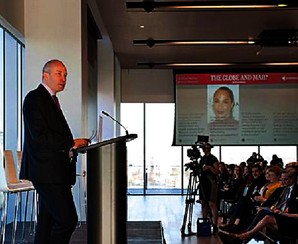
INMA to news media leaders: GenAI and business models dominate
31.12.2023
Entering 2024, generative AI and business models dominate the collective minds of news media c-suites worldwide – and with good reason.
One subject can potentially spark productivity gains and lower costs (GenAI), and the other subject represents a big chunk of the angst facing media companies (business models).
At the International News Media Association (INMA), we are seeing both subjects flash “red” across our in-person and virtual conferences, study tours, reports, Webinars, and blogs. INMA members believe in great journalism, and we want to crowdsource ways to amplify and monetise that journalism. INMA’s focus on the business of journalism is what sets us apart around the world.
Business models. On the business model front, CEOs attending our August Vail Roundtable overwhelmingly stated that there is plenty of headroom to grow digital subscriptions. Yet at INMA’s November Board of Directors meeting in London, members signaled a kind of subscription fatigue as they increasingly discussed commerce and advertising opportunities within the readers-first model.
Like so many subjects facing the news industry, there are different altitudes for discussion when it comes to subscriptions. We suspect that subscription-mature news brands may top out on high-revenue subscribers and are in the process of assembling asset bundles to continue down that path or shifting to low-price promotional offers to preserve volume growth. At a recent INMA Subscriptions Town Hall, participants were split as to whether 2024 represents more of a focus on subscription revenue or subscription volume.
The strategic challenge for news media companies, as they aim to fit their business model to the aspiration of their brands, is how can their journalism have influence and impact. Our suggestion, in an increasingly dirty digital information world, is that we must regain trust at scale. Not just for individual news brands, but the for-profit news media sector as a whole.
Yet one our Board members put forth a challenge at the London meeting: In an industry that prides itself on influence and impact, aren’t we going the direction of becoming a niche product for wealthy and well-educated elites?
At least one answer is refocusing the c-suite’s focus more toward commerce and advertising opportunities to help preserve the mass market impact our news brands have historically held.
Generative AI. Meanwhile, INMA’s 21,000+ members in 90+ countries are loudly discussing the pros and cons to generative AI. What started the year overwhelmingly negative from newsroom professionals has ended the year more positive across the news enterprise.
GenAI, too, is a subject with multiple altitudes: That is, the newsroom and advertising department view of GenAI is about opportunity, speed, and efficiency. The c-suite view of GenAI is dominated by the prospects of cost reductions.
Generative AI is one of the most vexing subjects we’ve ever attempted to cover at INMA. Media companies are reluctant to talk too loudly, yet so many experiments are happening. There is a clear playbook emerging – small things like automating transcriptions and translations, creating brand voices for audio, copywriting, and even marketing recommendations.
INMA led two study tours in Silicon Valley and New Delhi in the past month. From the Big Tech giants, we heard over and over that GenAI is a bigger shift than the emergence of the public Internet in 1994. Moreover, experts told us something we should already know: If 2023 marked the year in which tech and media sectors baptised themselves in generative AI, 2024 will be the year when the general public will do the same.
In 2024, INMA will launch a one-year “sprint” Generative AI Initiative designed to surface use cases and re-frame the narrative on a roller-coaster subject. The news industry needs to be ready for the next wave of GenAI. Overwhelmingly, the INMA community is telling us they are tired of the theories around GenAI, and they want playbooks, best practices, and more.
Our bet is that within a year, GenAI will be as ubiquitous in the news industry as “Big Data” and apps on your computer or mobile. Wrap-up. INMA has begun to think of its 100th anniversary in the year 2030. There is nothing more magical than a big anniversary.
What will the news media industry look like in seven years? We suspect media caterpillars will shed their skins and become butterflies. Newspapers and magazines will shed print. Television will shed terrestrial broadcast. Audio will shed radio. All will crash into a digital world where companies that never competed will be multi-media hybrids differentiated only by brand.
INMA is at the center of this great transition. The digital transformation of legacy media has been challenging, and now – with GenAI – we may be witnessing the transformation of digital.
INMA doesn’t just aim to be a caretaker of journalism, but of relevant news brands that produce great journalism.
-by Earl J. Wilkinson
Earl J. Wilkinson is executive director and CEO of the International News Media Association (INMA), a 93-year-old non-profit organisation focused on the business of journalism. INMA (www.inma.org) is the news media industry’s foremost ideas-sharing network with members connected via conferences, reports, Webinars, virtual meetings, awards competitions, and an unparalleled archive of best practices. INMA specialises in strategy, business models, subscriptions, product and tech, newsroom transformation, and generative AI innovation.
» drucken « zurück










